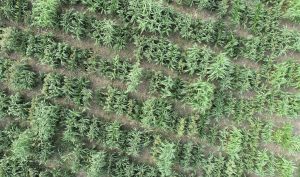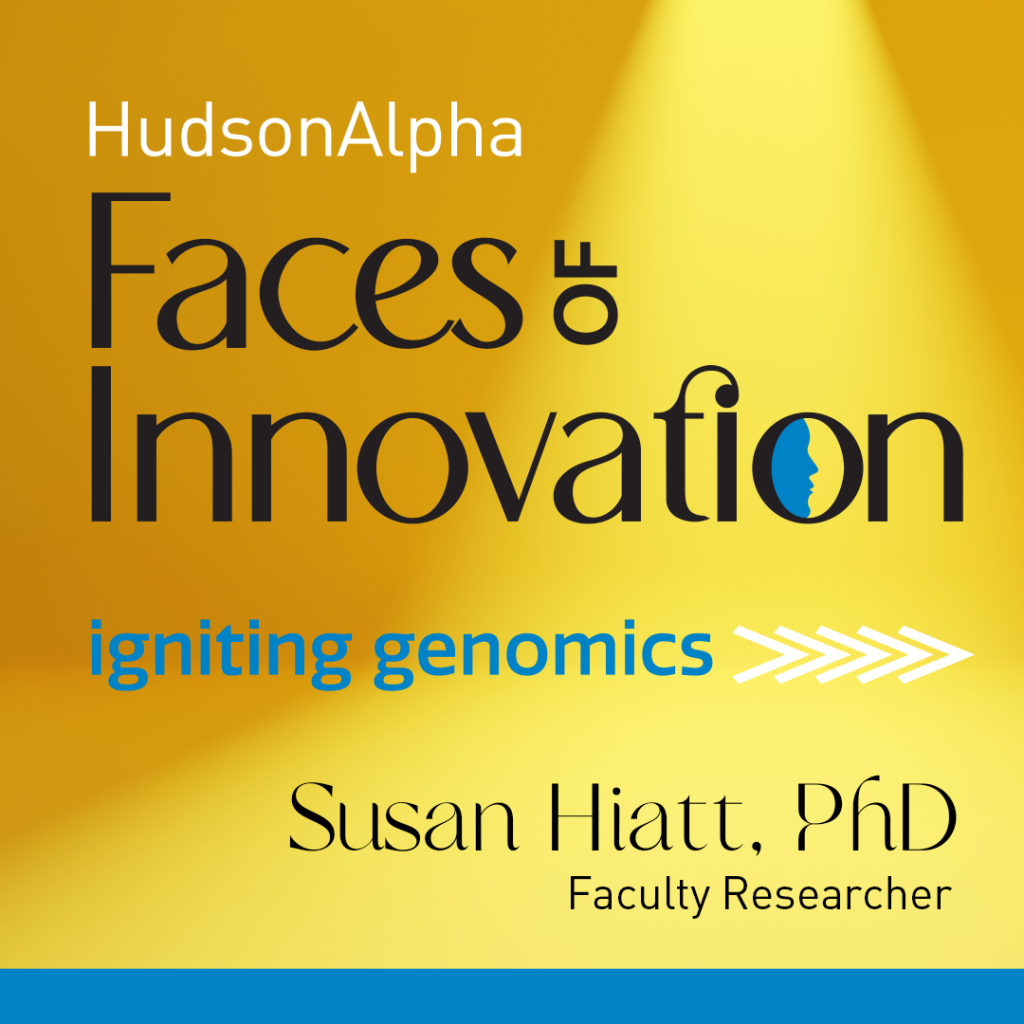In late 2018, researchers at the HudsonAlpha Institute for Biotechnology along with collaborators at the University of Nebraska-Lincoln (UNL) were awarded a $3.9 million grant from the National Science Foundation (NSF) to study nitrogen efficiency in the grain and biomass crop sorghum. The project would allow students to be involved in various stages of the research, helping to train the next generation of scientists in agrigenomics.
Only a year into the grant term, the COVID-19 pandemic changed the way we work and live. Scientists could no longer walk down the hall to their colleague’s office to troubleshoot a lab problem or talk about an upcoming manuscript without having to remember to wear a face mask. Video chats made us shed any fears of being on camera and travel to collaborator’s institutions, scientific meetings, and sometimes even field experiments were halted.
However, despite the challenges presented by the COVID-19 pandemic, the collaborative team still made significant progress with their research. They were recently awarded a supplemental grant to continue their research efforts into understanding nitrogen uptake mechanisms in sorghum, while also increasing the reach of the educational portion. Researchers hope to attain both of these goals by bringing on a third partner, Alabama A&M University (AAMU).
Nitrogen use in plants
Nitrogen plays an important role in the health and growth of plants. Without nitrogen, plants are unable to produce the chlorophyll that makes it possible for them to photosynthesize, the process where plants use energy from the sun to break down water and carbon dioxide to form sugars. While there is an abundance of nitrogen in our atmosphere, plants lack the means for utilizing gaseous nitrogen and instead pull bioavailable forms of nitrogen from the soil.
Supplementing the natural levels of nitrogen in the soil with synthetic nitrogen fertilizers allow many modern agricultural crops to be much more productive than was possible in the past. However, the production and use of synthetic nitrogen fertilizers is very energy intensive, costly to farmers, and has many negative environmental impacts resulting from fertilizer runoff, including reduced water quality and aquatic dead zones that threaten marine life.
Plants with better nitrogen efficiency could offset the need for excessive fertilizer use, thereby mitigating the adverse effects. The collaborative team of researchers from HudsonAlpha and UNL are using the grain plant sorghum to pinpoint genes and transcriptional regulatory networks that play a role in nitrogen uptake efficiency.
“Identifying genes or transcriptional elements that regulate nitrogen uptake is the first step in producing plants that are able to more readily thrive off of environmental nitrogen alone,” says HudsonAlpha researcher Kankshita Swaminathan, PhD. “Once we know those genes we can start using genome-directed breeding and gene-editing technologies to create plants that require limited to no additional nitrogen inputs with a maximum yield output.”
During the first three years of the NSF grant project, the team uncovered baseline nitrogen responsive gene-regulatory networks. Researchers at UNL grew sorghum in a greenhouse, equipped with an automated phenotyping system, under different nitrogen availability conditions. The multispectral cameras captured many properties of the plants, allowing researchers to track the health, growth, and yield related characteristics of individual plants through their whole life-cycle from seed to harvest.
HudsonAlpha researchers coupled the phenotypic information gained from the greenhouse trials with genomic information from tissue samples to identify key gene networks involved in sorghum nitrogen use. The ultimate goal of the project was to use cutting-edge gene editing technology to add genetic variations to the identified gene regions regulating nitrogen uptake with the hopes of increasing the efficiency.
“Our multidisciplinary team of scientists each bring unique expertise to the table. It was the combination of genomics and nitrogen stress expertise at HudsonAlpha and automated phenotyping and gene editing at Nebraska which made this whole project possible,” says James Schnable, assistant professor of agronomy and horticulture at UNL. “With the funds from our first grant, we showed that the goal of creating a functioning, integrated pipeline for identifying and interrogating regulatory genes and networks is well within reach. I’m really excited about what the next several years will show”
Moving from the greenhouse to the fields

Aerial photo of sorghum being grown under two nitrogen conditions at the University of Nebraska-Lincoln’s Havelock Farm in the summer of 2021. The photo was taken using an unoccupied aerial vehicle, or UAV, which is employed for high-throughput phenotyping.
The results from the greenhouse trials painted a detailed picture of the sorghum growth response and genes influenced by nitrogen. However, all of the experiments were done with a single genotype of sorghum under greenhouse conditions. While this provides a baseline, it does not yet capture the vast genetic diversity present among sorghum varieties, the different environments where farmers grow sorghum, or the different agronomic practices they employ.
“Our supplemental grant aims to address the practical limitations of our first grant by scaling up the number of sorghum genotypes that we study and growing the sorghum in the field,” says Jeremy Schmutz. “At HudsonAlpha we have had a successful relationship with Dr. Cebert and his team at Alabama A&M University for many years so it only made sense to bring them on as a third partner for this project to run field tests in Alabama.”
The team will plant 406 sorghum genotypes (known as the Sorghum Association Panel (SAP)) in fields in both Nebraska and Alabama. The sorghum will be grown under both sufficient and deficient nitrogen conditions. The researchers will perform manual scoring of plant growth throughout its growing season. Unmanned aerial vehicles (UAVs) will also be used to collect image data throughout the growing season and more easily monitor sorghum traits associated with yield. HudsonAlpha researchers will once again analyze phenotypic data and genome data to pinpoint genes involved in sorghum nitrogen response.
Increasing diversity in agriscience
Although COVID-19 put a pause on much of the student oriented learning opportunities during their initial grant, the team hopes to start engaging students soon. Like the original grant, their supplemental grant also includes an educational component. This time, however, the team hopes to engage more minorities who are under-represented in STEM fields, especially in agricultural sciences.
The two-year supplement will mentor and cross train young researchers at AAMU, a public, historically black, land-grant university. The team hopes to help significantly increase the retention of young scientists in agriscience and broaden participation of minorities in agriscience.
“Alabama A&M is excited to be a part of this NSF-funded project,” says Ernie Cebert, PhD, an expert agronomist and geneticist as well as the director of the Winifred Thomas Agricultural Research Station at Alabama A&M where the sorghum will be grown. “In addition to playing a part in such a scientifically and environmentally impactful project, it is also important to us that we will be contributing to the training of the future biosciences workforce.”
This material is based upon work supported by the National Science Foundation under Grant No. OIA-1826781. Any opinions, findings, and conclusions or recommendations expressed in this material are those of the authors and do not necessarily reflect the views of the National Science Foundation.
About HudsonAlpha: HudsonAlpha Institute for Biotechnology is a nonprofit institute dedicated to developing and applying scientific advances to health, agriculture, learning, and commercialization. The HudsonAlpha biotechnology campus consists of 152 acres nestled within Cummings Research Park, the nation’s second largest research park. The state-of-the-art facilities co-locate nonprofit scientific researchers with entrepreneurs and educators. HudsonAlpha is a national and international leader in genetics and genomics research and biotech education and fosters more than 45 diverse biotech companies on campus. To learn more about HudsonAlpha, visit hudsonalpha.org.


